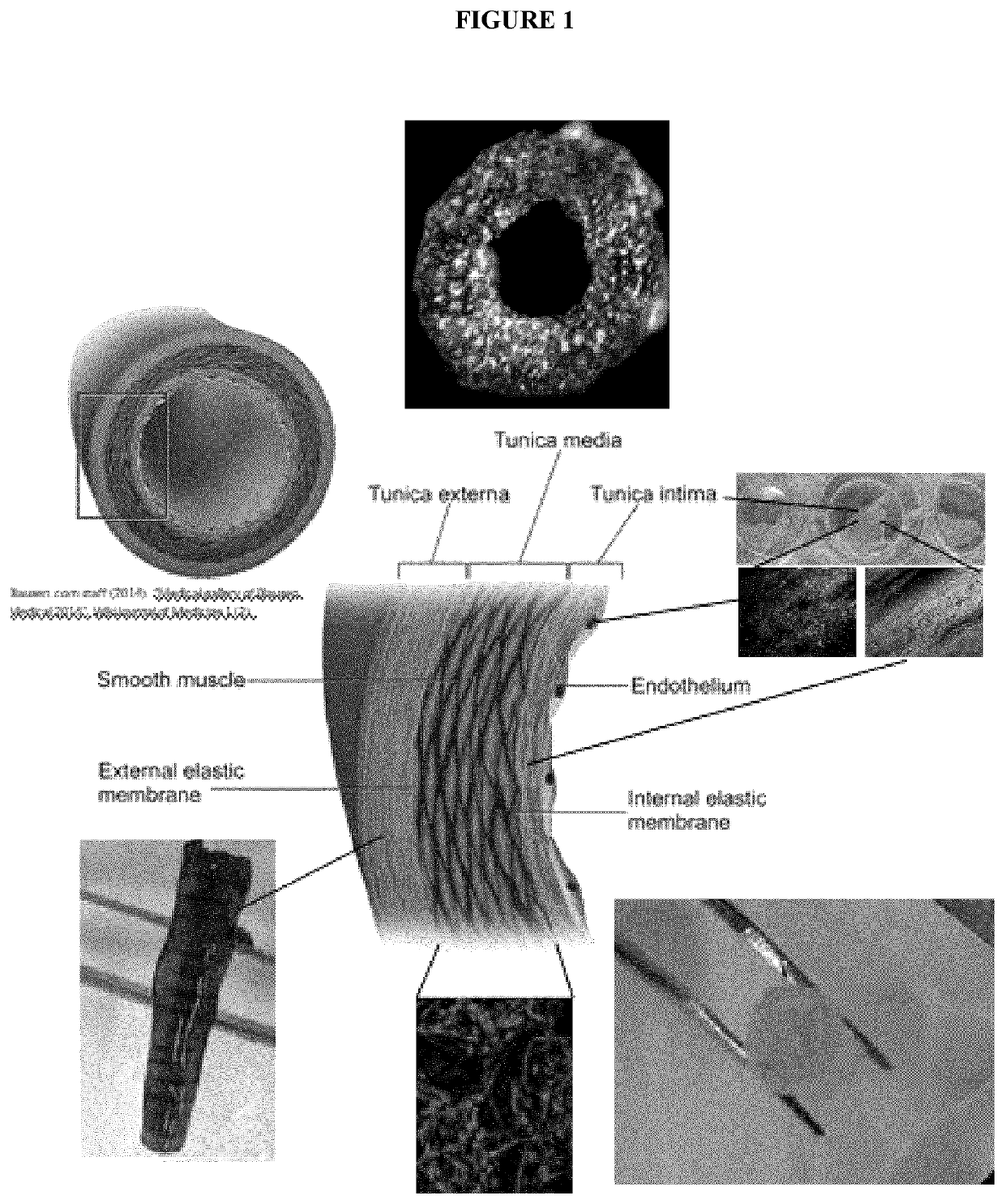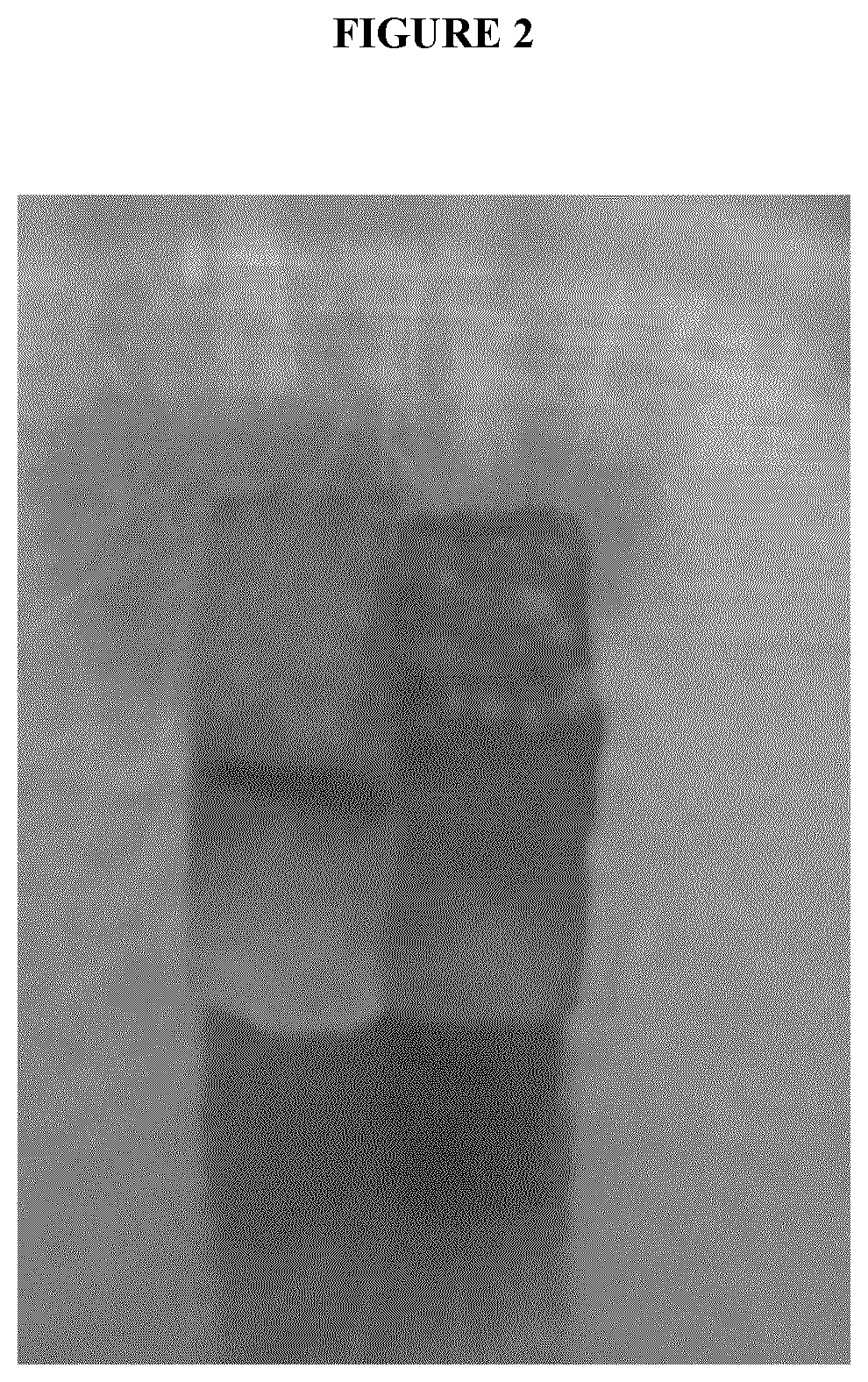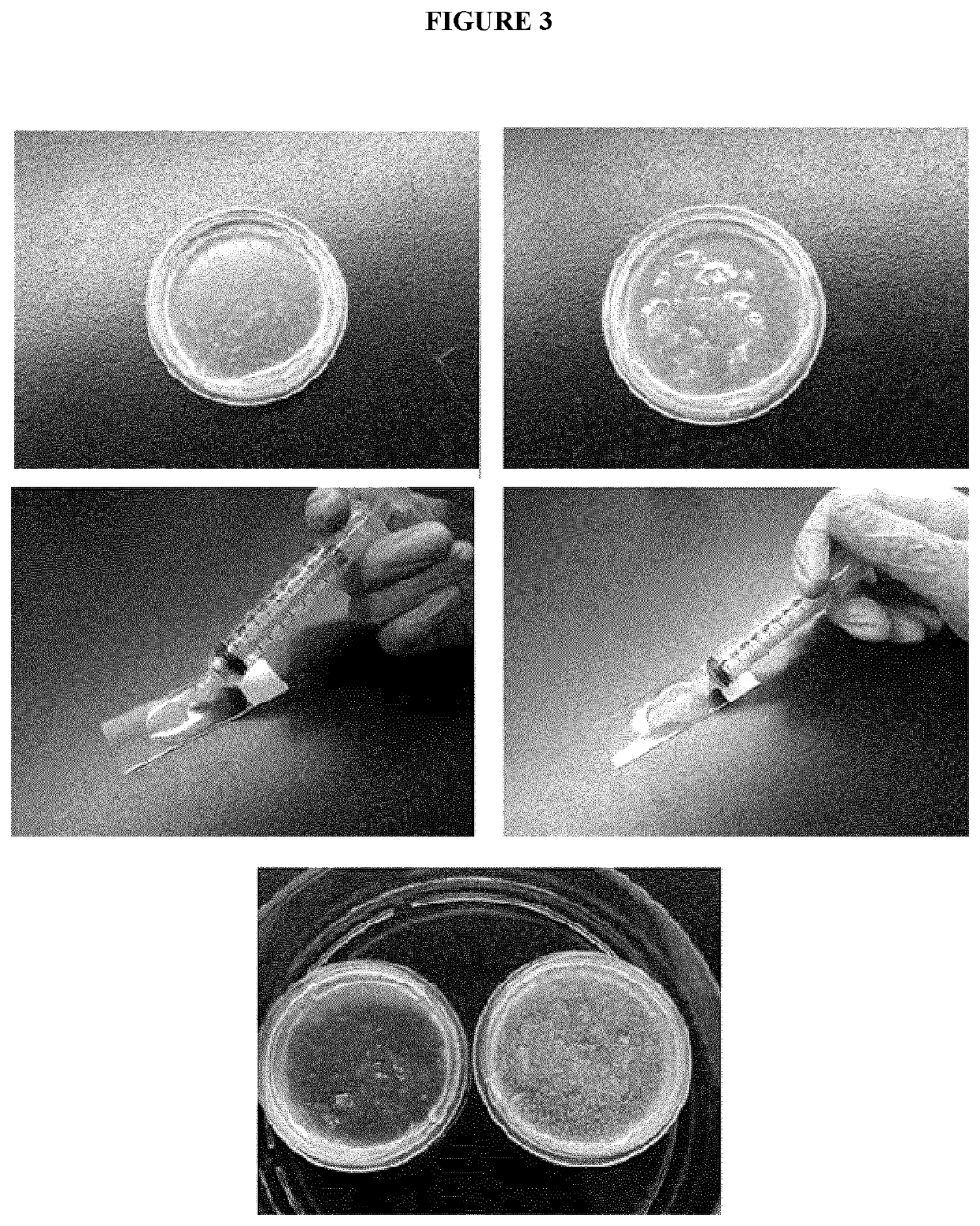Composite biomaterials
a biomaterial and composite technology, applied in the field of composite scaffold biomaterials, can solve the problems of biochemical and physical defects, impaired cellular, tissue, and/or organ function, and difficulty in recreating or approximating the natural in vivo environment of the cell,
- Summary
- Abstract
- Description
- Claims
- Application Information
AI Technical Summary
Benefits of technology
Problems solved by technology
Method used
Image
Examples
example 1
Composite Biomaterials Assembled by Gel Casting
[0359]In this example, different scaffold biomaterial subunits are combined via gel casting using a hydrogel to join the subunits together. Although it is contemplated that many different hydrogels may be used, this example mainly relates to gelatin, collagen, and agarose hydrogels. In certain embodiments, hydrogels may comprise gelatin, collagen, agarose, hyaluronic acid, alginate, fibrin, fibronectin, agar, PEG, PVA, or any combinations thereof, for example In certain embodiments, two or more scaffold biomaterial subunits may be used as a scaffold for the hydrogel to form around, wherein the hydrogel may have one or more features tailored for the desired application. In certain embodiments, materials having different properties may be joined together in such manner For example, in certain embodiments different regions of the material(s) may have different topographies, densities, chemical functional groups, mechanical properties, poro...
example 2
Composite Interlocking Biomaterials
[0393]In this example, different scaffold biomaterial subunits were combined via shape-based interlocking. Geometry of the subunits was used to hold the assembled structure together. Although a wide varied of interlocking geometries are contemplated, this example mainly used a peg-and-hole type interlocking similar to that of Lego blocks. By interlocking, customization of shape and / or structure may be achieved, and larger macro structures may be provided having varied degrees of flexibility and articulation, as desired for the particular application.
[0394]3D biocompatible scaffolds consisting of decellularized plant tissue have been developed. These biomaterials may support cell growth, invasion, and / or proliferation in vitro and in vivo. As described, composite materials of cellulose scaffolds and hydrogels have been developed, where the presence of the hydrogel may allow for distinct biochemical and physical cues to be temporarily or permanently ...
example 3
Composite Biomaterials of Plant and Bacterial Cellulose
[0427]In this example, composite biomaterials comprising both plant and bacterial cellulose are provided. In certain embodiments, guided assembly based biolithography (GAB) techniques may be used to grow bacterial cellulose on decellularized or casted / printed plant cellulose sources to obtain a composite biomaterial with adjustable ratios of cellulose having different crystal structures located in different and configurable regions, and may allow for different microtopographies and densities. In certain embodiments, a bacterial source may deposit cellulose on a plant-derived cellulose-based scaffold biomaterial, for example, with the two different celluloses having different ratios and / or crystal structures. The resulting product may thus comprise different celluloses, which may have different functional chemistries, densities, porosities, and / or mechanical properties. By combining celluloses, the resulting products may provide ...
PUM
| Property | Measurement | Unit |
|---|---|---|
| particle size | aaaaa | aaaaa |
| pore size | aaaaa | aaaaa |
| pore size | aaaaa | aaaaa |
Abstract
Description
Claims
Application Information
 Login to View More
Login to View More - R&D
- Intellectual Property
- Life Sciences
- Materials
- Tech Scout
- Unparalleled Data Quality
- Higher Quality Content
- 60% Fewer Hallucinations
Browse by: Latest US Patents, China's latest patents, Technical Efficacy Thesaurus, Application Domain, Technology Topic, Popular Technical Reports.
© 2025 PatSnap. All rights reserved.Legal|Privacy policy|Modern Slavery Act Transparency Statement|Sitemap|About US| Contact US: help@patsnap.com



